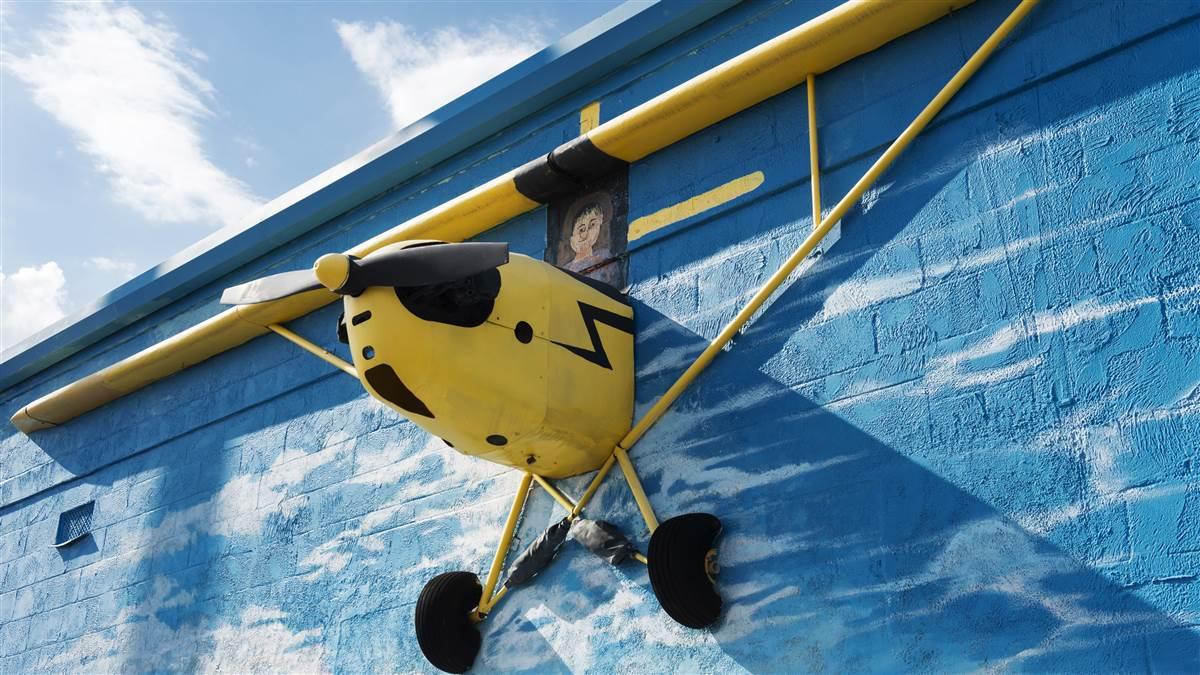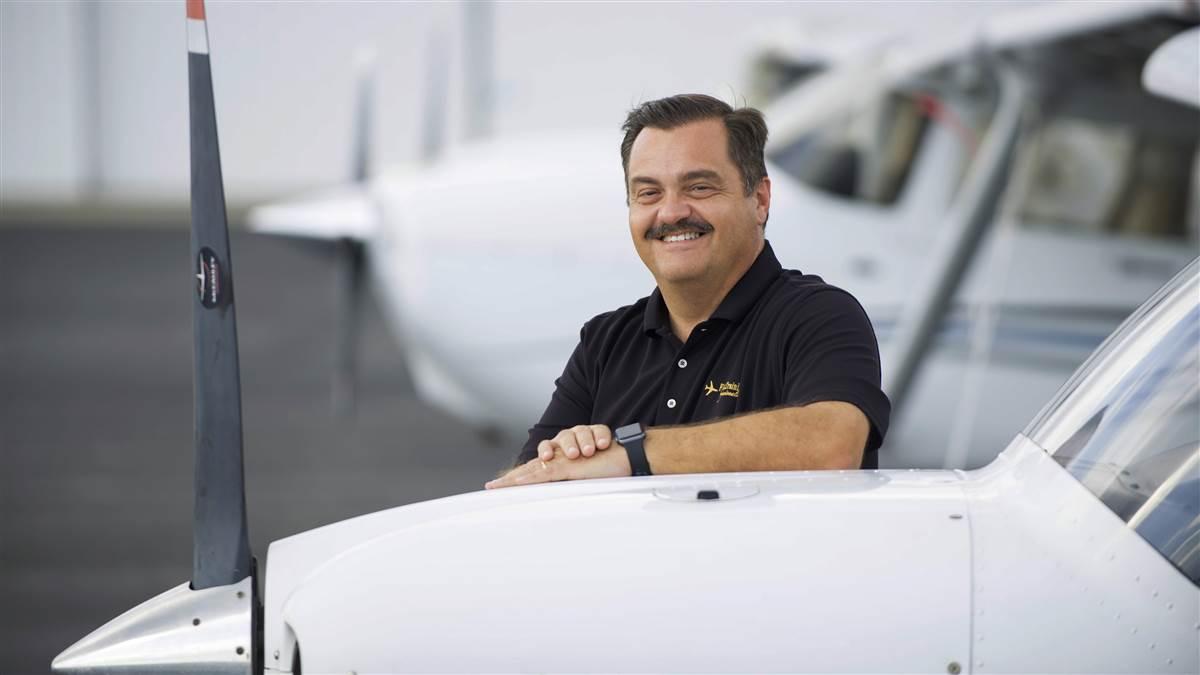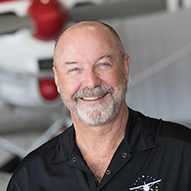Going Pro
What’s going right at Flight Training Professionals?

 Located on the north ramp at Orlando Executive Airport (ORL) with good signage and ample parking on the landside, Flight Training Professionals is even more easily found from the airside. The ramp is full of propeller-driven aircraft, corporate jets, and at least two news helicopters that are ready to go on a moment’s notice. In a mural of a waterfront scene, the nose and leading edge of a Piper Cub’s wing protrude from the cement-block wall of the building. Installed years ago by a previous FBO, the mural is something of a landmark that has sentimental value to many regulars on the field. It’s certainly eye-catching.
Located on the north ramp at Orlando Executive Airport (ORL) with good signage and ample parking on the landside, Flight Training Professionals is even more easily found from the airside. The ramp is full of propeller-driven aircraft, corporate jets, and at least two news helicopters that are ready to go on a moment’s notice. In a mural of a waterfront scene, the nose and leading edge of a Piper Cub’s wing protrude from the cement-block wall of the building. Installed years ago by a previous FBO, the mural is something of a landmark that has sentimental value to many regulars on the field. It’s certainly eye-catching.
Inside, the reception area is decorated in a muted, professional tone. A four-blade wooden propeller is mounted to one wall, along with the traditional collection of framed photos of aircraft in flight. The seating is comfortable and arranged so customers and crew face each other. The layout is highly conducive to spending time gazing out the large window that faces the ramp—which is exactly how CFII applicant Jack Bentimiglia chooses to spend his down time between lessons and study sessions.
At 29 years old, Bentimiglia is delving into aviation as a second career. In his first he put his MBA to work in the financial world as a portfolio manager. Now, he wants to do something more personally satisfying. His end goal is to work for an airline.
Bentimiglia is a prime example of why Flight Training Professionals has developed a stellar reputation. “There’s days I’m here hanging out, just to be here,” Bentimiglia says. “The time spent here is invaluable.”
At the back of the building, Robert Breaux is climbing into a Redbird FMX simulator with his instructor, Evan Pickle, to shoot some instrument approaches and practice a hold or two. Breaux is a regular renter at Flight Training Professionals, and although he has several decades on Bentimiglia, he exhibits the same affection for the facility and the crew it employs. He explains with enthusiasm why he has been such a devoted customer of Comisky and Wynsma’s business for so many years: “Professional,” “reliable,” “excellent service,” and similar expressions of satisfaction roll off his tongue.
 This is not the typical flight training operation, yet Comisky admits they’re not doing anything that couldn’t be emulated anywhere else. “What makes us different?” Comisky asks rhetorically. He ticks off three critical items on his
This is not the typical flight training operation, yet Comisky admits they’re not doing anything that couldn’t be emulated anywhere else. “What makes us different?” Comisky asks rhetorically. He ticks off three critical items on his
fingers: “Our staff, our airplanes, and then our curriculum.”
The staff. Comisky and Wynsma aren’t looking for astronaut-quality flight instructors with previously unknown super powers. They hire people who can do the work and understand the company’s culture of providing exceptional customer service. Their secret, if there is one, is to train their staff to serve their customers in a dependable, predictable, professional manner. Comisky says simply, “That is the key to success.”
“When I hire a new instructor,” Comisky explains, “they go through 40 hours of ground and about 15 or 16 hours of airplane and simulator time before I release them to work with customers.”
This staff training program means customers can be confident that any instructor they talk to or work with is genuinely in sync with all the others at the company. It also means instructors have a built-in peer network that supports its members with standardized operational procedures for all steps of the flight training process.
Every CFI who comes to work at the company goes through the same training process. “Even if they’re one of our graduates, we do the same program,” Comisky says.
 The aircraft. Flight Training Professionals is a Cessna Pilot Center, and has been since 2007. Understandably, the company’s flight line is heavily populated with Cessna aircraft, including four Cessna 172Ss with Garmin G1000 glass panels. Two Cessna 162s fill out the Sport Pilot and lower-cost time-building option, and a Cessna 182T with a G1000 is also available for training or rental. For low-wing aficionados, a Cirrus SR20 stands at the ready, as does a retractable-gear Piper Arrow and a Beechcraft Duchess that’s used for multiengine training.
The aircraft. Flight Training Professionals is a Cessna Pilot Center, and has been since 2007. Understandably, the company’s flight line is heavily populated with Cessna aircraft, including four Cessna 172Ss with Garmin G1000 glass panels. Two Cessna 162s fill out the Sport Pilot and lower-cost time-building option, and a Cessna 182T with a G1000 is also available for training or rental. For low-wing aficionados, a Cirrus SR20 stands at the ready, as does a retractable-gear Piper Arrow and a Beechcraft Duchess that’s used for multiengine training.
“My oldest aircraft was built in 2006,” says Comisky. The advantage of having relatively new, low-time aircraft on the line is reflected in the uptime of the aircraft. Older aircraft, while perfectly viable and even beloved in many cases, tend to have more maintenance problems. That can lead to frequent or extended downtime that robs the customer of the ability to fly when it’s convenient. For a business that prides itself on providing exceptional customer service, that downtime is an unacceptable variable that may be corrected simply by putting newer aircraft on the line.
The curriculum. Comisky believes in following a syllabus and having a logical teaching order. He also thinks the customer should have the ability to expand on concepts during each lesson while working with an instructor. In fact, he believes it’s critical to the student’s success. The support of that structure makes the difference in a training program, whether the customer is a private pilot applicant or working diligently toward a higher-level certification.
Having the ground school training materials available as an online product is also an asset. Not only does the customer have 24/7 access to the lesson material, including video instruction, but the record-keeping aspect of the package allows both the training provider and the customer to remain focused on where they are and where they’re going, with a roadmap to help get them there every step of the way. If an area of weakness is discovered, it can be addressed in a timely manner.
 The customers who work with Flight Training Professionals think highly of their chosen training provider. Even certificated pilots, such as Breaux, who rent from the flight school find it to be such an enjoyable experience they make continuing education a regular part of their flying life.
The customers who work with Flight Training Professionals think highly of their chosen training provider. Even certificated pilots, such as Breaux, who rent from the flight school find it to be such an enjoyable experience they make continuing education a regular part of their flying life.
Comisky and Wynsma have a plan that’s working. Each has decades of flight instruction under his belt, and are fortunate to benefit from instructors such as Evan Pickle, most of whom have a dozen years in the right seat, guiding students and customers to help reach their goals. More than that, however, the partners have created a culture of customer service that extends beyond the front door, throughout the entire facility, into the cockpit—and even brings online delivery of educational programming to customers in their home or office.
Sitting in the front reception area, Bentimiglia continues to gaze out onto the ramp at the passing traffic, chat with the staff, and generally enjoy his down time. “It’s the people in the building that make this business what it is,” he says.
And what it is, is exceptional.



